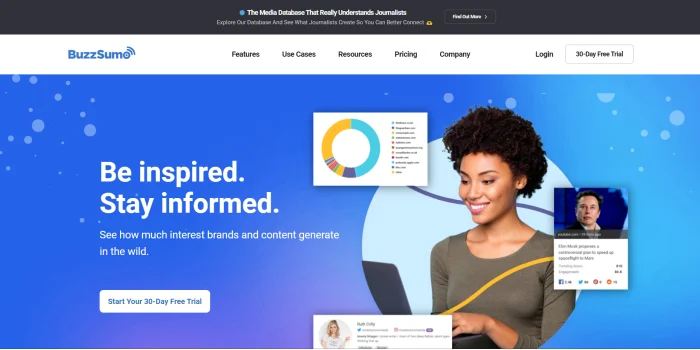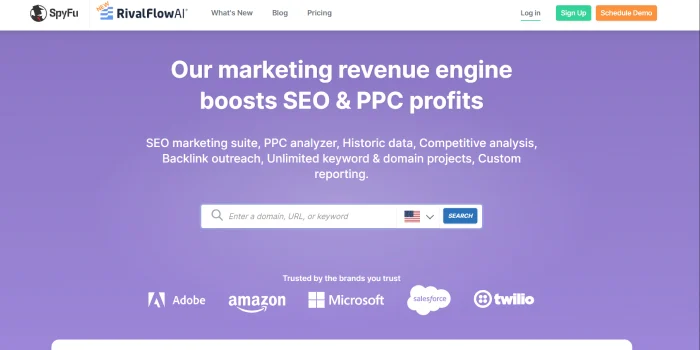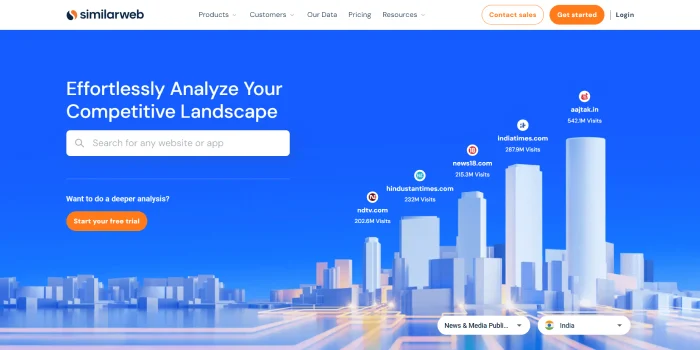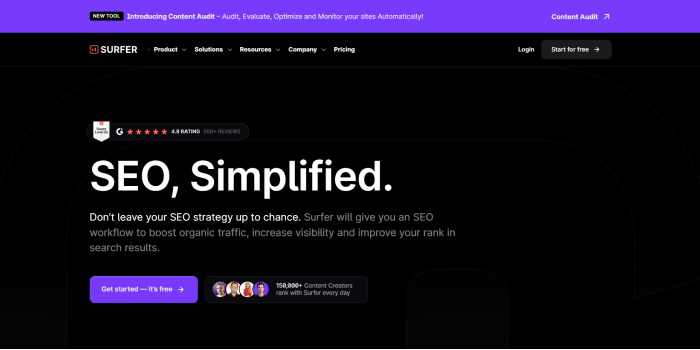Contents
- What is competitor analysis in SEO?
- Why is SEO Competitor Analysis Important?
- Key Elements To Analyse Your SEO Competition
- How to do competitor analysis in SEO in 11 Steps?
- 10 Best SEO Competitor Analysis Tools
- 1. SEMrush
- 2. Ahrefs
- 3. Moz Pro
- 4. SparkToro
- 5. BuzzSumo
- 6. SpyFu
- 7. SE Ranking
- 8. Similarweb
- 9. Surfer SEO
- 10. Majestic
- Conclusion
In the ever-evolving world of digital marketing, SEO (Search Engine Optimization) has emerged as a critical component for businesses to establish an online presence and drive targeted website traffic.
However, the SEO landscape is highly competitive, with numerous websites vying for the coveted top search engine result pages (SERPs) positions. This is where SEO competitor analysis comes into play.
It offers valuable insights into the strategies and tactics employed by your competitors, enabling you to identify areas for improvement and gain a competitive edge.
What is competitor analysis in SEO?

SEO competitor analysis is a strategic process that involves evaluating and analyzing your direct competitors' online presence, performance, and strategies.
Instead of relying on guesswork for keyword targeting, content creation, and link building, you can leverage competitor research to identify successful strategies and enhance your SEO approach.
This process aims to reverse engineer the most effective elements of their tactics for enhancing your own SEO strategy. This will allow you to make informed decisions and refine your SEO approach.
This comprehensive guide will delve into the importance of SEO competitor analysis, the key elements to analyze, and the steps to conduct an effective analysis.
Additionally, incorporating semantic SEO into your strategy can further optimize your website for search engines.
Why is SEO Competitor Analysis Important?
Conducting an SEO competitor analysis is part of the audit services, and it's crucial for staying ahead online.
By analyzing your competitor’s SEO KPIs, such as keywords and content strategies, you can gain insights to enhance your SEO approach and outperform the competition.
- Identify Opportunities and Gaps: By analyzing your competitors' strategies, you can pinpoint areas where they excel and where you can outperform them. This could include targeting untapped keywords, improving content quality, or strengthening your backlink profile.
- Benchmark Your Performance: Comparing your website's performance against your competitors can provide valuable insights into your strengths and weaknesses. By benchmarking key metrics like organic traffic, keyword rankings, and backlink profiles, you can identify areas for improvement and set realistic goals.
- Stay Ahead of the Curve: The digital landscape is constantly evolving, and your competitors may be implementing new tactics or adapting to changing algorithms. Regular competitor analyses can help you stay informed about industry trends and changes, allowing you to adapt your strategy accordingly.
- Gain Competitive Intelligence: Understanding your competitors' strategies can provide valuable insights into their target audience, content strategies, and marketing efforts. This knowledge can inform your decision-making processes and help you differentiate your brand from the competition.
- Identify Link Building Opportunities: By analyzing your competitors' backlink profiles, you can uncover potential link building opportunities from websites already linking to your competitors. This can help you strengthen your own backlink profile and improve your website's authority.
If your business lacks resources or time to invest in a long-term SEO growth strategy, use search engine optimization services to improve your website's performance and visibility in search engine rankings.
Want to reduce your CAC to half?
Key Elements To Analyse Your SEO Competition
Conducting a comprehensive SEO competitor analysis involves examining several key elements. Here are some of the most important aspects to consider in your SEO competitor report:
- Keyword Analysis: Analyze the keywords your competitors are ranking for, their positions in the SERPs, and the volume and difficulty of those keywords. This information can help you identify opportunities to target untapped or underutilized keywords and improve your content strategy.
- Content Analysis: Evaluate your competitors' content's quality, quantity, and relevance. Analyze content length, formatting, multimedia elements, and engagement metrics (e.g., social shares and comments). This can provide insights into effective content strategies and help you create more compelling and valuable content.
- Backlink Analysis: Examine your competitors' backlink profiles, including the quality and quantity of their backlinks, the anchor text distribution, and the sources of those links. This information can help you identify link building opportunities, improve your website's authority and trust signals, and do better seo competitive analysis.
- Technical SEO Analysis: Assess your competitors' website architecture, site speed, mobile-friendliness, and other technical aspects that can impact search engine crawling, indexing, and ranking. Identifying and addressing technical issues can improve your website's overall performance.
- User Experience (UX) Analysis: Evaluate your competitors' website design, navigation, and overall user experience. A positive UX can increase engagement, lower bounce rates, and better search engine rankings.
- Social Media Analysis: Analyze your competitors' social media presence, engagement levels, and the types of content they share on various platforms. This can provide insights into effective social media strategies and help you better connect with your target audience.
- Local SEO Analysis: For businesses with a local presence, analyze your competitors' local SEO strategies, including their Google My Business listings, local citations, and local content optimization efforts.
How to do competitor analysis in SEO in 11 Steps?
Now that you understand the importance of SEO competitor research analysis and the key elements to analyze, let's explore the steps involved in conducting an effective analysis:
Step 1: Identify Your Competitors
The first step in an SEO competitor analysis is to identify your direct competitors. These websites offer similar products or services and target your business's keywords and audience. You can use various methods to identify your competitors, such as:
- Search for your target keywords on Google and observe the top-ranking websites.
- Use industry knowledge and market research to identify well-known competitors in your niche.
- Leverage SEO tools like Semrush or Ahrefs to find websites ranking for your target keywords.
Step 2: Gather Data and Perform Keyword Research
Once you have identified your competitors, it's time to gather data and perform keyword research. Use SEO tools to analyze your competitors' keyword rankings, search volume, keyword difficulty, and other relevant metrics. This will help you understand their content strategy and identify potential keyword opportunities.
Step 3: Analyze Content Strategy
Evaluate your competitors' content strategy by analyzing content type (e.g., blog posts, product pages, guides), content length, multimedia elements, and engagement metrics. Find patterns and identify what works well for your competitors regarding content creation and promotion.
Step 4: Examine Backlink Profiles
Analyze your competitors' backlink profiles to understand their link building strategies. Use SEO tools to assess the quality and quantity of their backlinks, the sources of those links, and the anchor text distribution. This information can help you identify potential link building opportunities and improve your backlink profile.
Step 5: Assess Technical SEO
Evaluate your competitors' technical SEO aspects, such as website architecture, site speed, mobile-friendliness, and other factors impacting search engine crawling and indexing. Identify any technical issues or areas for improvement hindering their performance.
Step 6: Investigate User Experience (UX)
Analyze your competitors' website design, navigation, and overall user experience. Evaluate factors such as layout, information architecture, and usability. A positive UX can increase engagement, lower bounce rates, and better search engine rankings.
Step 7: Review Social Media Presence
Examine your competitors' social media presence, engagement levels, and the types of content they share on various platforms. This can provide insights into effective social media strategies and help you better connect with your target audience.
Step 8: Analyze Local SEO (if applicable)
For businesses with a local presence, analyze your competitors' local SEO strategies. Evaluate their Google My Business listings, local citations, and local content optimization efforts. This can help you improve your own local SEO strategy and enhance your visibility in local search results by doing better competitor seo tracking.
Step 9: Compile and Analyze Findings
Once you have gathered all the necessary data for your competitive SEO analysis, compile your findings and analyze the results. Look for patterns, strengths, weaknesses, and opportunities across the analyzed elements. This will help you identify areas where you can outperform your competitors and refine your overall SEO strategy to improve your website's performance.
Step 10: Develop an Action Plan
Based on your analysis, develop an action plan to address the identified opportunities and improve your SEO performance. This may include optimizing content, building high-quality backlinks, addressing technical issues, or improving user experience.
Step 11: Continuously Monitor and Adjust
SEO is an ongoing process, and your competitors' strategies will likely evolve over time. Therefore, monitoring your competitors and adjusting your strategy as needed is essential. Set up regular intervals (e.g., quarterly or bi-annually) to conduct competitor analyses and stay ahead of the curve.
Want to reduce your CAC to half?
10 Best SEO Competitor Analysis Tools
Choosing the right SEO competitor analysis tool can be daunting, but it's essential for staying ahead in the digital landscape.
Whether you're looking for an all-in-one SEO solution or a tool with unique features, we've got you covered. Let's dive into the best SEO competitor analysis tools available today.
1. SEMrush

Often hailed as the industry leader, SEMrush offers an extensive range of SEO, PPC, and competitor analysis tools. Its standout features include:
- Domain Analytics: Track competitors' website traffic, organic keywords, backlinks, and more.
- Keyword Research: Discover high-volume keywords that your competitors are ranking for.
- Competitive Intelligence: Monitor competitors’ advertising campaigns and social media activity.
- Content Marketing Tools: Create and optimize content to outrank competitors.
2. Ahrefs

Known for its powerful backlink analysis tools, Ahrefs is a close competitor to SEMrush. Key features include:
- Backlink Analysis: Identify websites linking to your competitors and assess the value of those links.
- Rank Tracking: Monitor competitors' keyword rankings over time.
- Content Explorer: Discover popular content that competitors are linking to.
- Site Audit: Detect technical SEO issues on competitors' websites.
- Stats: Over 2 million users, trusted by Netflix, Spotify, and Deloitte.
3. Moz Pro

Moz Pro is ideal for beginners and small businesses, offering a balance of features and affordability. Highlights include:
- Domain Authority Scoring: Evaluate the authority of competitors' websites.
- Keyword Research: Identify high-quality keywords with low competition.
- Backlink Analysis: Explore the sources of competitors' backlinks.
- On-Page Optimization: Receive suggestions for improving your website’s SEO.
- Stats: Over 500,000 users, trusted by Mailchimp, Hootsuite, and SEMrush.
4. SparkToro

SparkToro focuses on competitor analysis through audience intelligence. Unique features include:
- Competitor Audience Analysis: Understand where your competitors' traffic originates.
- Influencer Identification: Discover influencers discussing your competitors.
- Content Insights: Analyze top-performing content formats and topics.
- Stats: Over 5,000 users, trusted by Unbounce, HubSpot, and CoSchedule.
5. BuzzSumo

BuzzSumo excels at identifying high-performing content on social media. Notable features are:
- Content Discovery: Find popular content shared by competitors.
- Influencer Identification: Locate influencers promoting competitors' content.
- Analytics: Assess the social media performance of competitors' content.
- Stats: Over 100,000 users, trusted by BuzzFeed, National Geographic, and The Guardian.
6. SpyFu

SpyFu is a budget-friendly option offering essential SEO features. Key features include:
- Historical Keyword Tracking: Monitor changes in competitors' keyword rankings.
- Paid Keyword Research: Identify keywords competitors are bidding on for PPC ads.
- Domain History: Track changes in competitors' websites over time.
- Stats: Over 100,000 users, trusted by Wix, Hootsuite, and SEMrush.
7. SE Ranking

SE Ranking offers good value with comprehensive SEO and competitor analysis features. Highlights include:
- Rank Tracking: Monitor competitors' keyword rankings across search engines.
- Website Audit: Identify technical SEO issues on competitors' websites.
- Backlink Analysis: Examine competitors' backlink sources.
- Stats: Over 800,000 users, trusted by HP, PayPal, and Philips.
8. Similarweb

Similarweb provides deep insights into website traffic and market share. Unique features include:
- Website Traffic Analysis: Analyze traffic volume, sources, and device usage for competitors.
- Market Share Analysis: Compare market share rankings within your industry.
- App Analytics: Evaluate the performance of competitors' mobile apps.
- Stats: Over 2 million users, trusted by Uber, Amazon, and eBay.
9. Surfer SEO

Surfer SEO specializes in on-page optimization, helping you create SEO-friendly content. Key features include:
- Content Audit: Assess existing content and find areas for improvement.
- Topic Cluster Builder: Create content clusters targeting related keywords.
- SERP Analysis: Compare your content against top-ranking pages.
- Stats: Over 100,000 users, trusted by Ahrefs, SEMrush, and Moz.
10. Majestic

Majestic is renowned for its backlink analysis capabilities. Notable features include:
- Backlink Explorer: Discover websites linking to competitors.
- Citation Flow: Evaluate the quality and authority of competitors' backlinks.
- Historical Backlink Analysis: Track changes in competitors' backlink profiles over time.
- Stats: Trusted by thousands of SEO professionals worldwide.
Conclusion
By understanding your competitors' strengths, weaknesses, and tactics, you can make informed decisions, refine your SEO approach, and gain a competitive edge.
Following the steps outlined in this comprehensive guide, you can conduct a thorough competitor SEO analysis and find insights that can drive targeted traffic, improve your online visibility, and ultimately achieve your business goals.
Remember, SEO is an ongoing process; continuous monitoring and adjustment are key to ranking your website. Saffron Edge has been providing SEO services for 16 years and can help your website rank better, attracting high-quality keyword traffic.
Get The SaaS Marketing Toolkit
Related Blogs
We explore and publish the latest & most underrated content before it becomes a trend.
5 min read
How Does Customer Affinity Mapping Help Brands Analyze User Research?
By Sabah Noor3 min read
An Easy Checklist To Measure The Competence Of Your Inbound Marketing Agency
By Praveen Kumar
Subscribe to Saffron Edge Newsletter!

Get The SaaS Marketing Toolkit










